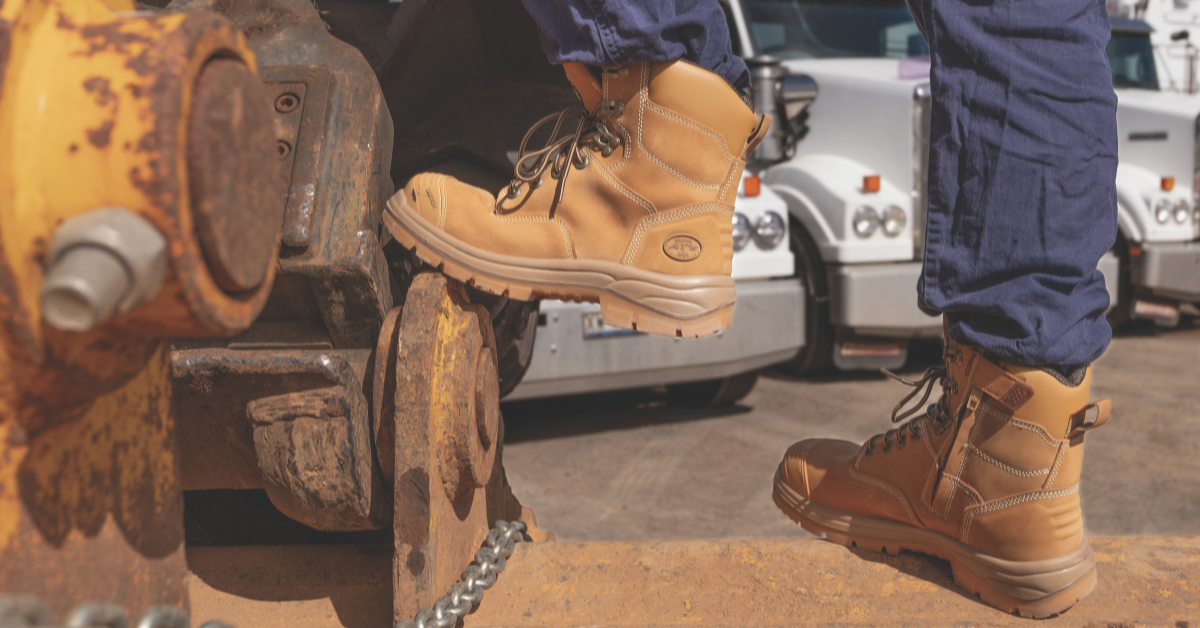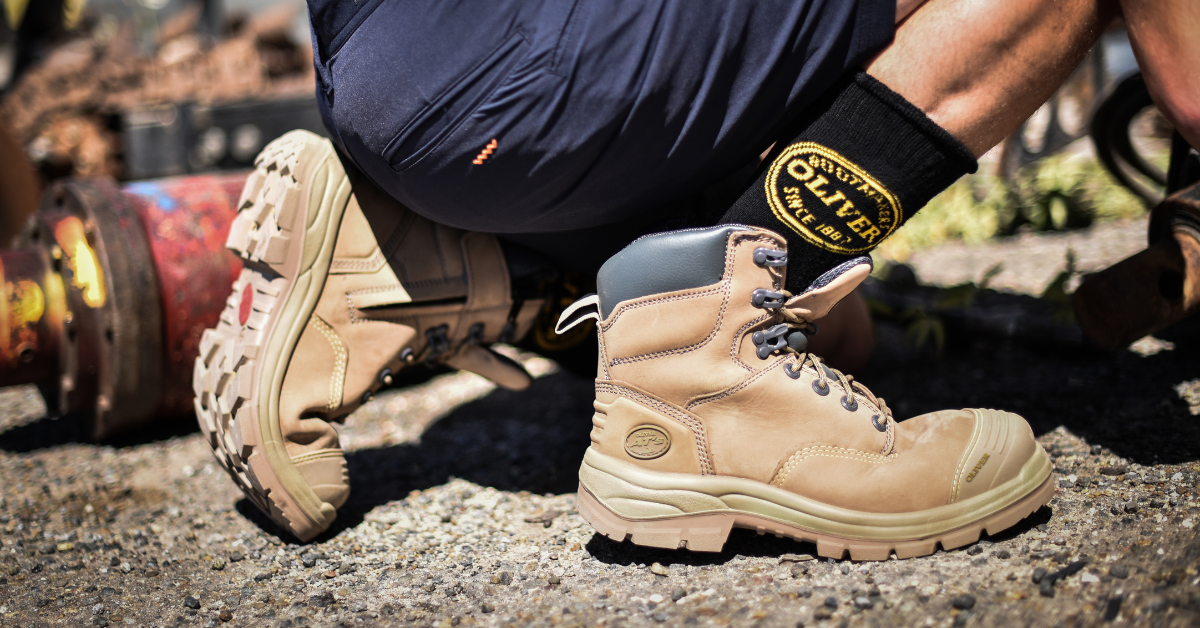Promoting worker safety, feet-first
Are your workers wearing the right safety footwear? Every day on Australian worksites, feet put up with a lot. From slips, trips and falls, to...
| SHOP OLIVER |
|
|
Were you ever forced to wear an older sibling’s hand-me-down shoes as a child that never quite fit properly? Maybe they were that bit too snug, so your toes breathed a sigh of relief when you took them off, or a little on the loose side so your heel was rubbed raw every time you took a step.
You would know that it’s impossible to feel comfortable and confident when you’re trying to walk in someone else’s shoes. And it’s not safe either. You’re more likely to trip over your own feet or lose your footing and fall. Now imagine you were wearing those shoes in the workplace.
With more and more women entering the industrial and trade space, many things have started changing on the jobsite. Having both men’s and women’s bathrooms is one such change that’s increased everyone’s comfort. Having a range of women’s apparel to suit a female form is another change that is essential for maximum productivity and safety.
Another key area is footwear. Did you know that in the past, much of women’s footwear used on the jobsite was just a smaller version of the male design? Many brands took work boots made to fit men’s feet and simply reduced the size and called them a ‘women’s range’.
Yet, according to a study on the differences between men’s and women’s feet, there are four foot-shape, five ankle and two calf differences between the sexes.
Women’s feet are generally shorter and narrower but have a higher arch than men’s feet. They have a larger ball to heel ratio meaning, unlike men’s feet, the heel is noticeably smaller than the circumference of the ball of the foot. A woman’s ankles are more flexible, meaning they are more prone to sprains and twists. The big toe is shallower, and the outer foot is shorter than a man’s.
Women also have a larger Q-angle – the angle from hip to knee – due to having wider hips than men. This puts pressure on the foot in a different way. Women’s feet tend to flatten out more with each step, leading to bunions, heal pain, calluses and tendonitis.
Things like pregnancy, the contraceptive pill and menopause also affect the risk of injury or pain in women’s feet and ankles. With all of this in mind, it’s very clear that one shoe does not fit all.
When you’re on the job site, you need to be comfortable, safe and free to move. And a big part of being agile and avoiding injury is the footwear you choose. Ill-fitting, cumbersome boots put pressure not only on your feet and ankles but on the rest of your body that has to compensate to stay upright and balanced in any situation.
That’s why it’s essential to have a safety boot that fits specifically to a women’s foot. One well-known brand is revolutionising women’s safety footwear. Oliver has created a range of safety boots designed based on the science and anatomical studies of women’s feet and how they move.
Their 49 range are moulded to women’s feet and provide boots that are tough, long-lasting, comfortable, and fit for purpose.
“At Oliver, we understand the that comfort and safety in the workplace is of the utmost importance. Ill-fitting footwear only adds to things such as fatigue, productivity, and risks to one’s own safety. That’s why we have developed a comprehensive range of women’s Safety Boots, for both light and heavy industries,” says Brett Huggins, Product Development Manager, Honeywell.
Safety starts from the ground up and wearing the right boots that are made for your feet and give you support on the jobsite is essential. Let’s leave those hand-me-downs in the past where they belong and make safety and comfort in footwear a priority for the whole crew.
This article first appeared in the latest edition of Safety Spotlight. For more safety articles like this one, click below to checkout the online version of the magazine.

Are your workers wearing the right safety footwear? Every day on Australian worksites, feet put up with a lot. From slips, trips and falls, to...
.png)
It’s a running joke that in Australia, every creature under foot is a hazard. When it comes to the mining industry, however, the potential hazards...

In the Australian work environment, workers’ feet take a daily beating. Around 70% of workers spend a quarter of their workday standing or walking....